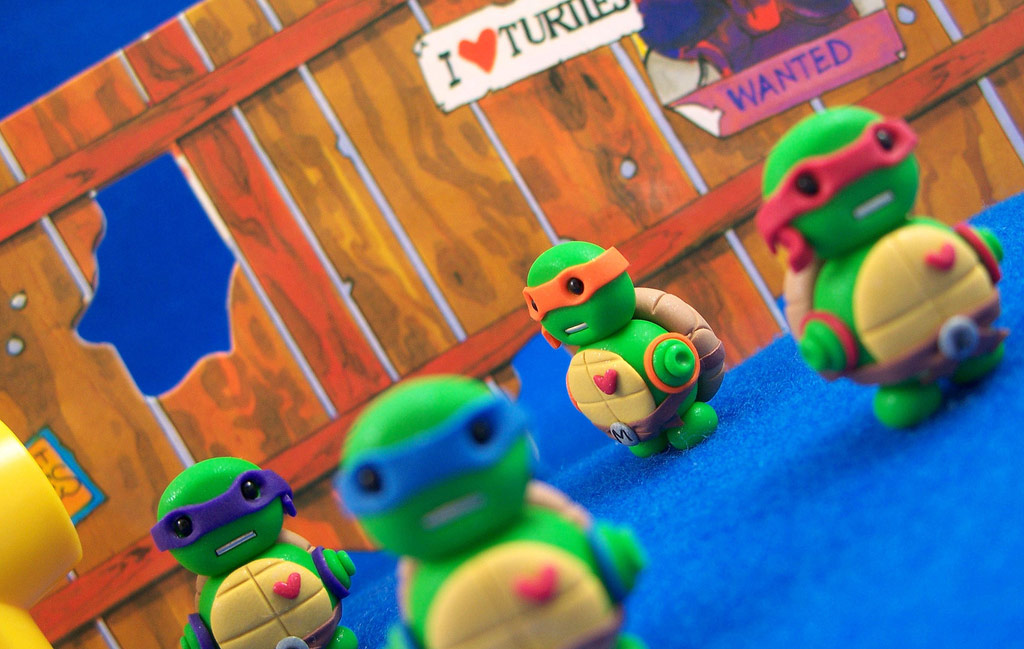 I started my user experience education in a very different way than most.
I started my user experience education in a very different way than most.
Long before smartphones, apps, and mobile advertising, I worked for The Walt Disney Company … but not as a technologist. I was a costumed martial arts performer and my manner of ‘user-engagement’ was as Leonardo – the blue bandana-wearing, katana-wielding, pizza-eating member of the Teenage Mutant Ninja Turtles – who performed together with his turtle brothers on stage at the Disney MGM Studios in the early 90s.
As strange as it might sound, many of the lessons that I learned about Walt Disney’s philosophy for crafting a deep, engaging guest experience have inspired my core principles around breakthrough mobile user experience.
Now, more than ever, the mobile app landscape is seeing an increased focus on the importance of a deep, engaging user experience. Not only must the app itself be handcrafted to surprise and delight the user, but integrated advertising units must do the same. Publishers and brands are both starting to appreciate the importance of crafting deep brand experiences, instead of just slapping a banner onto the bottom of the screen.
AI Weekly
The must-read newsletter for AI and Big Data industry written by Khari Johnson, Kyle Wiggers, and Seth Colaner.
Included with VentureBeat Insider and VentureBeat VIP memberships.
2012 made a half-step in this direction with the adoption of rich media advertising. Rich media ad units are still typically screen-edge banners, but they offer more resolution, higher-quality animation, and more varied tap actions. Although rich media was a much-needed upgrade to previous mobile banners, the next phase will be much more dramatic.
2013 is shaping-up to be the year of native mobile advertising, much to the benefit of publishers, brands, and users.
Native ads are different from conventional ads in three specific ways:
- They are more organically integrated with the app itself (think beyond the banner)
- They expose more of the phone’s internal features (photo roll, advanced social media, etc.)
- They provide for much more engaging ad creatives and branded content
While the shift to create a native ad experience on mobile might seem revolutionary to some in the industry, it’s at the core of what I’ve been working on at Zumobi for years and reflects many of Walt Disney’s principles that I learned from my experiences as a Turtle. With this in mind, here are a few Ninja lessons that I see reflected across the dynamic landscape of mobile advertising and user experience…
We should all strive to surprise, delight and engage our guests
At Disney, you’re not an employee, you’re a Cast Member. You’re not at work, you’re On Stage.
With mobile advertising, we are challenged every day to move beyond the 320 x 50 cage, and truly express a client’s brand in a way that is native to their unique values. While banner advertising is an important aspect of advertising, it is not a style that surprises, delights, and engages the user. Tomorrow’s native app-within-an-app experiences will let users make purchases, share user-generated content photos and media, and engage deeply with social media.
As designers, we should strive to channel Walt’s philosophy to create tomorrow’s breakthrough native mobile experiences.
They can’t see your face; they CAN see your expression
When you’re in costume as a Ninja Turtle, people can’t see your face directly.
However, every emotion, smile, and expression is channeled through the character, and consequently felt by the guests. I believe that the same metaphor applies to software, apps, and mobile brand experiences. While the user cannot see the designer, they can sense the expression that they wore when they handcrafted a given user experience.
In this way, it is always essential to remember that the passion seeps beyond the confines of an app or campaign, and directly drives engagement.
Zen and the art of mobile advertising
There is a yin and a yang to all things, including mobile advertising. In the same way that soft-style kung fu blurs the lines between striking and blocking, good native advertising blurs the lines between content and sponsorship. Have a lifestyle app targeted to mothers? Offer recipe content as part of your campaign. Want to reach potential auto buyers? Offer compelling automotive content in mobile enthusiast sources.
This is an incredibly exciting time for apps, mobile, and advertising – the most dramatic opportunities are still untapped.
While the last five years has proven to be thrilling in the landscape of mobile, I foresee the next five years to be even more exciting.
John SanGiovanni is the Co-Founder and Vice President of Product Design at Zumobi where he coordinates the product design strategy and manages Zumobi’s in-house creative studio. A former Microsoft Technical Evangelist, John has more than 13 years of experience as a wireless strategist and mobile user interface designer and has authored or co-authored more than 12 patents in the areas of mobile advertising, hardware interfaces, and interaction techniques for next-generation mobile devices. John recently spoke at the Seattle Interactive Conference where he presented his case for the future of mobile advertising. View his complete session here: or the highlights here
photo credit: Jenn and Tony Bot via photopin cc
VentureBeat's mission is to be a digital town square for technical decision-makers to gain knowledge about transformative enterprise technology and transact. Learn More
